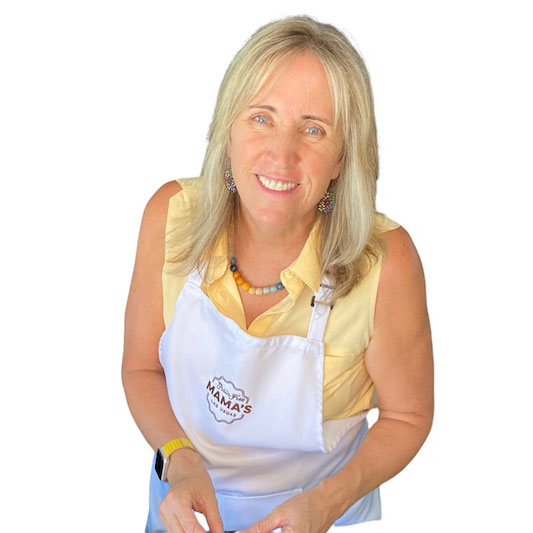How To Transition To A Healthier Diet

Warning: At least 3 in every 10 people will develop health problems directly resulting from their diet choices. Yes, you read that right and the actual number may be even higher than this.
The consumption of refined flours, sugars (corn- and cane-), dairy, alcohol, pork, and food additives cause elevated inflammation. So, what is this distinction between refined flours and … regular flour? Refined typically means that they took off the outer shell, so does that really make the grain different? Gluten sensitivity and celiac issues are related to problems with part of the protein structure inside the grains.
Everyone has a different opinion.
What is the common denominator is that there are digestive problems and elevated inflammation with consumption of the flours of grains, grains, corn- and sugar- cane. They are all part of the same plant family: the Grass Family. Hmmm…makes you think.
The foods we consume all day are the largest single contributor to the development of disease and autoimmune problems. The combination of the actual food ingredients, the residual chemicals, food additives and preservatives are what tips the scale towards either health or inflammation and disease.
Yet, we do not often have a ‘Be Healthy’ insurance plan. Instead, we purchase health insurance and hope we won’t have to use it. This is a reactionary mindset. If we want to have a different outcome than what is being played out over and over again of poor health, we have to change the conversation and our actions; both inside our heads and with other people.
What if we adopted a proactive health plan that incorporates our dietary, physical and mental well-being? Often you hear people say ‘I have to start a work out program to lose weight.’
STOP.
Before embarking on that mindset, first consider if your food choices are counterproductive to good health. If you start with the workout, aren’t you possibly just going to be more hungry, and then ingesting even more of the foods that predispose you to health problems and disease? Maybe the sustainable plan is to first assess your diet, make healthy goals, and then implement these changes before ramping up the workout and becoming even more hungry.
Transitioning to a healthier diet is a positive step towards improving your overall well-being. Here are some steps and resources to help you make the transition:
- Set clear and realistic goals: ‘Rome was not built in a day’ also applies to making the transition from your present diet to a healthier one. Determine what you want to achieve with your healthier diet. Be specific about your objectives, whether it’s weight loss/body composition changes, increased energy, better digestion, or improved overall health. Setting clear goals will keep you focused and motivated. Be willing to be patient with yourself, since you are probably not good at it yet. Keep working on it and it will become easier over time.
- Educate yourself: Learn about nutrition, food groups, and their impact on your body. Understanding the nutritional value of different foods will help you make informed choices and plan balanced meals. Here is our book that can help you: Food Breakthrough Book: Adjust Your Diet, Transform Your Life
- Start: Take the first little step in the right direction. Making sudden, drastic changes to your diet can be challenging to sustain. Instead, make small, progressive changes over time. For example, start by incorporating more vegetables into your meals or swapping sugary snacks for healthier alternatives. Three steps forward and two steps back is progress. In fact, celebrate every step forward!
- Emphasize the unprocessed foods that this Universe grows: Despite dire news that there is little to no food left, and only the new manufactured products are going to save our planet (I am a firm believer in sustaining the people on the planet who can then sustain the planet efficiently), going into the grocery stores will show you otherwise. Farmers markets will also give you hope, and starting a garden will delight your taste buds. Opt for whole, unprocessed foods such as fruits, vegetables, grain free baked goods, lean proteins, and healthy fats. These foods are rich in nutrients and will support your body’s needs. Also, check out our Grain Free Mama’s online store for delicious Crepe and Pizza Crust Mixes
- Reduce or eliminate processed foods and added sugars: Minimize your intake of processed foods, sugary drinks, and snacks. These can contribute to weight gain and various health issues. Often we overlook the sugar-ladened drinks that have sneaky calories and chemicals in them. Open your mind to develop new healthy favorites that will give you health over time.
- Portions: While it is good to be mindful of your portion sizes, as overeating can lead to unnecessary calorie intake, did you know that the foods you are eating may be repressing the satiation (or we’ve had enough) reaction in your body? Foods that have this component are often marketed to us as ‘crave-able‘ of some type or another. Craving means addicting, but craving sounds much less problematic, so craving is often the preferred term used in marketing.
- Stay hydrated: Drink plenty of water throughout the day. It is very easy to mistake thirst for hunger and even the feeling of ‘starving’, so implement the practice of having a drink of water first. This way you can naturally eliminate unnecessary snacking simply and effectively. Work yourself up to 6-8 glasses of water a day. Also, tea and coffee are not the same as water. They can dehydrate you and then you will need to drink even more water to get to a balanced state.
- Plan your meals and cook at home: Plan your meals ahead of time to avoid impulse eating and ensure you have nutritious options readily available. Preparing meals at home allows you to have more control over the ingredients used, and it can be a fun way to experiment with healthy recipes. The art of meal prep is not as scary as it seems. This last weekend, I made a soup, turkey meatballs, roasted a chicken and then deboned it, sautéed vegetables, cooked grain free noodles and cut up fruit. Then I kind of mixed and matched all week, making different combinations of the foods I prepared, adding some freshly cut vegetables. I felt so prepared and it also allowed me to make more use of my time. It was definitely a win for me!
- Listen to your body: Pay attention to how your body responds to the changes in your diet. Everyone is different, so be open to adjusting your diet based on your individual needs and preferences. This can be a little bit of a challenge at first if you have been in the habit of consuming a lot of processed foods and sweets. Eating foods that cause elevated inflammation sort of disconnects us with what our body is telling us. Once you make the shift to eating a more healthy diet this will improve. It is kind of like the story of how bank tellers are taught to spot a counterfeit bill. They study the real money very closely and get to know it so well that spotting the counterfeit becomes easy. When you shed the inflammation, you will begin to hear your body better and better.
- Be patient and kind to yourself: Changing your eating habits is a process that takes time and effort. Don’t be too hard on yourself if you have occasional slip-ups. Focus on progress rather than perfection. We are all the result of the foods we have eaten, the environments we are in and grew up in, and most importantly, the conversations in our heads. The #1 most important part of making permanent effective change is to write down our goals and also change the conversations in our head. When you notice self-defeating and negative thoughts, change the narrative. Also, a goal unwritten is a wish for a better life. Take the first step to a new you by writing down what you want to accomplish and why you want to accomplish it. Make a decision and then plan to succeed. We are all usually bad at something before we become good at it. Have the courage to begin before you are good at it and support yourself inside your head.
- Seek support: Share your journey with friends, family, or online communities who have similar health goals. Having a support system can provide motivation, accountability, and helpful tips. We are launching our online community, A Place At The Table Global Community (Nourish Your Mind, Transform Your Plate. Learn to choose foods that elevate your health/wellbeing). Here is more information about this community;
- We bring people together to grow our food knowledge, shed outdated thinking, and reframe our food mindsets to transform our lives, health, and well-being.We do this through up-to-date food and nutrition information, engaging community conversations, education courses, events/challenges, webinars/seminars and specific topic groups.For individuals who want to:
- Be proactive about healthy eating
- Find support in transitioning to a healthier diet
- Use healthy foods as medicine for a healthier life
- Learn new resources for how to eat healthier with diabetes, celiac, food allergies or any autoimmune disease
- Improve gut health and microbiome with healthy foods
- Naturally support healthy detox pathways utilizing foods
- Cultivate a healthy gut-mind connection
- We do this by:
- Shedding outdated thinking about foods
- Reframing our food mindset
- Developing greater food knowledge and a refreshed relationship with food
- Building relationships with others on the same path
- Practicing new eating habits and and food mindset choices
- So that we can:
- Effect positive permanent change to the way we see foods and make everyday food choices
- Gain an understanding of how foods are truly affecting our bodies, thinking and mental wellbeing
- Successfully navigate transformation to healthier eating
- Define healthy eating on our own terms with confidence
- Stay on top of a rapidly changing environment with the truth about foods so that we can easily identify the truly healthy foods from the healthy food claims and false promises
- Be a part of the change that needs to happen to get back to eating to live our best lives
- Sign up here.
- We bring people together to grow our food knowledge, shed outdated thinking, and reframe our food mindsets to transform our lives, health, and well-being.We do this through up-to-date food and nutrition information, engaging community conversations, education courses, events/challenges, webinars/seminars and specific topic groups.For individuals who want to:
- Be patient and kind to yourself: Changing your eating habits is a process that takes time and effort. Don’t be too hard on yourself if you have occasional slip-ups. Focus on progress rather than perfection.
Remember, the key to success is making sustainable changes that work for you and your lifestyle. Consulting with you doctor, dietitian or nutritionist can also provide personalized guidance and recommendations based on your specific health needs and goals. If this article has resonated with you, please share with your friends. Women account for 83% of purchases. As a woman Founder and woman-owned (WOSB and WBENC) business I ask you to support us with your purchases and to also support as many other woman-owned businesses as you can. Thank you for helping us make a difference!

Written by Margie Traxler
Grain Free Mama’s is a FoodTech Consumer Product Goods company. We make gluten/grain/sugar free (Edible Grasses Free), dairy free and botanical nut free baking mixes that put the simple back into simply good for you. We also have educational resources to help you on your healthy eating journey. Margie, the Founder/CEO, received her B.S. in Biology from Portland State University. She has 22 years of experience as a successful Restaurant owner. She lives and operates her business in Henderson, Nevada.





